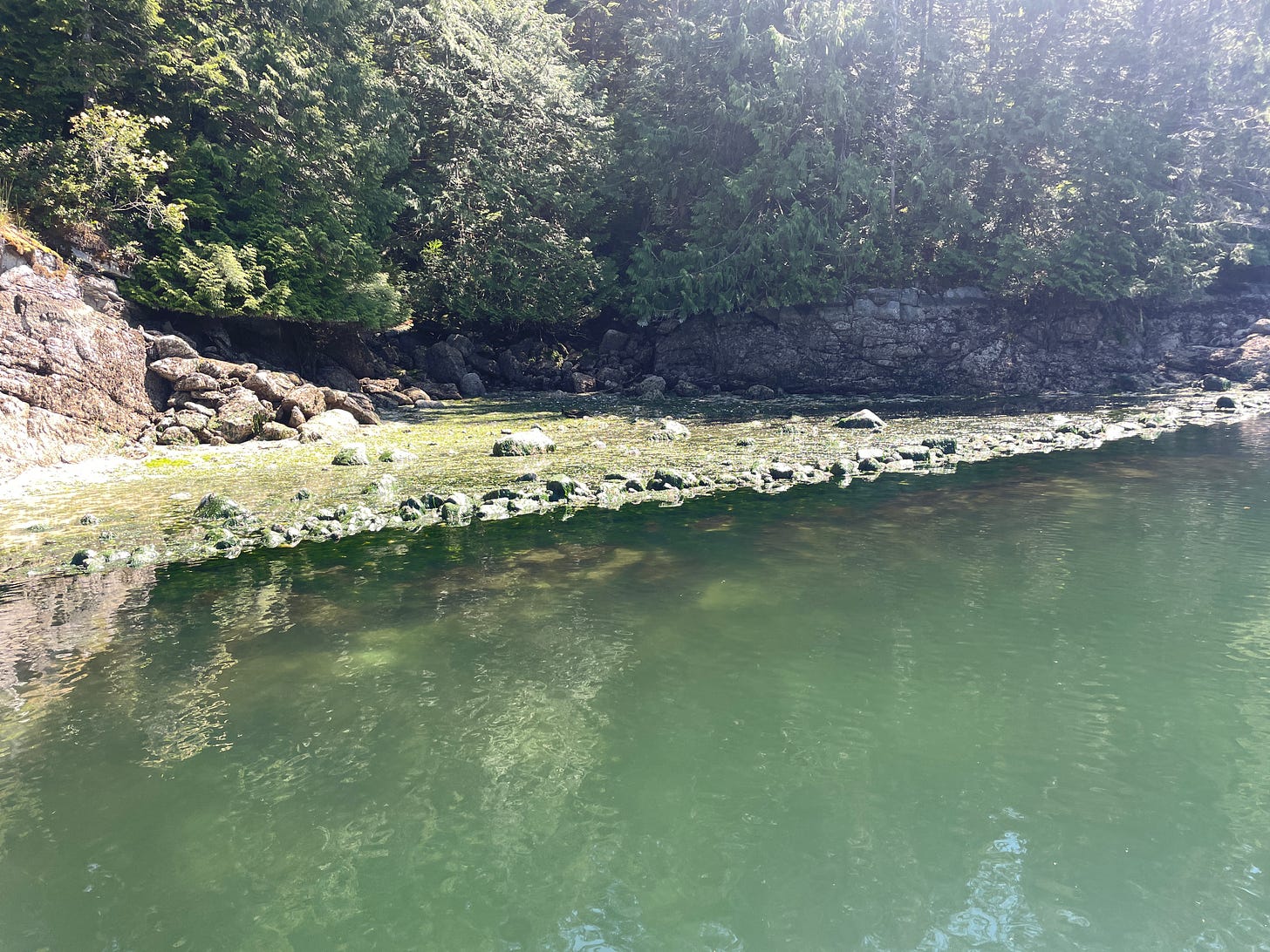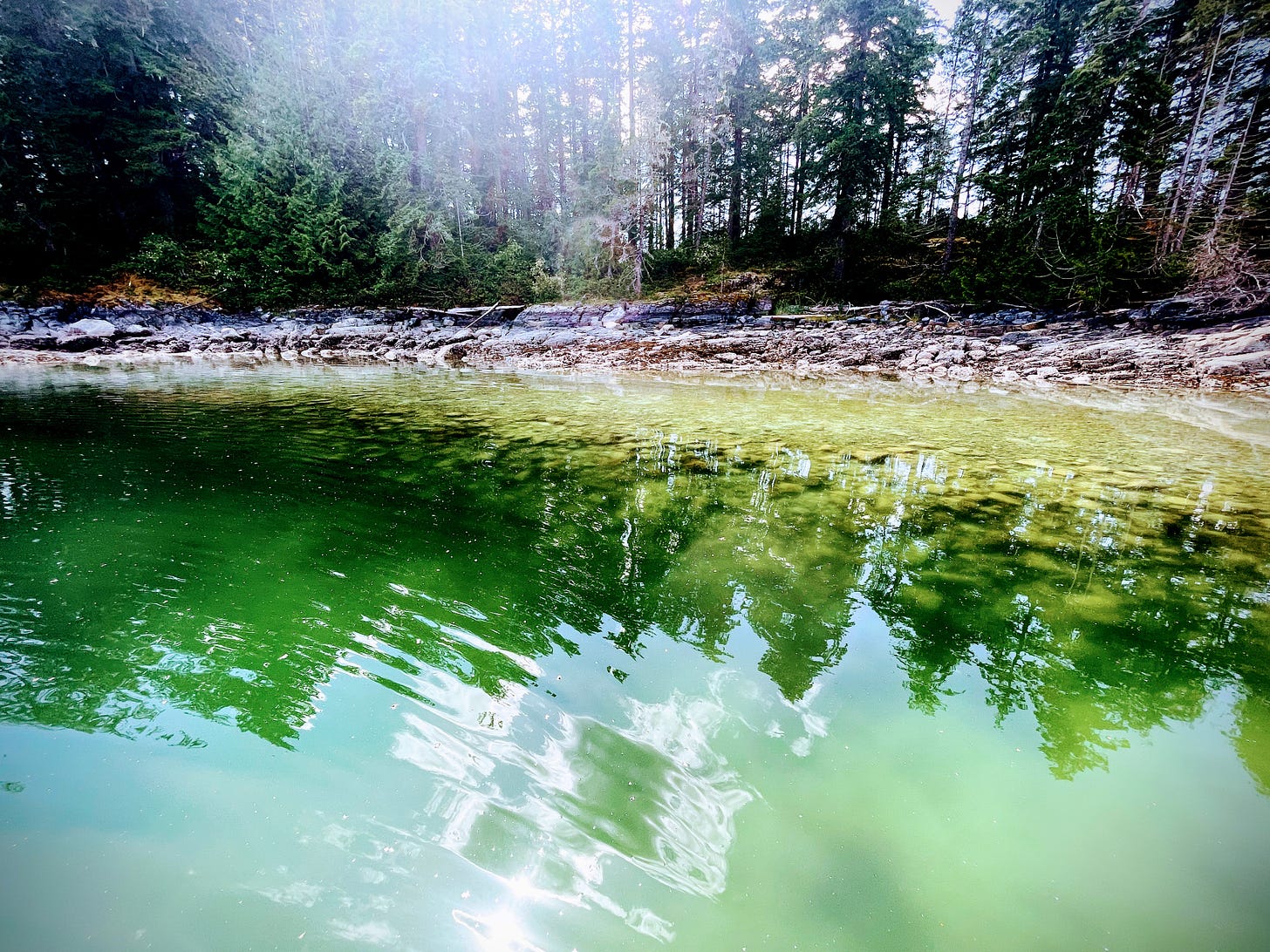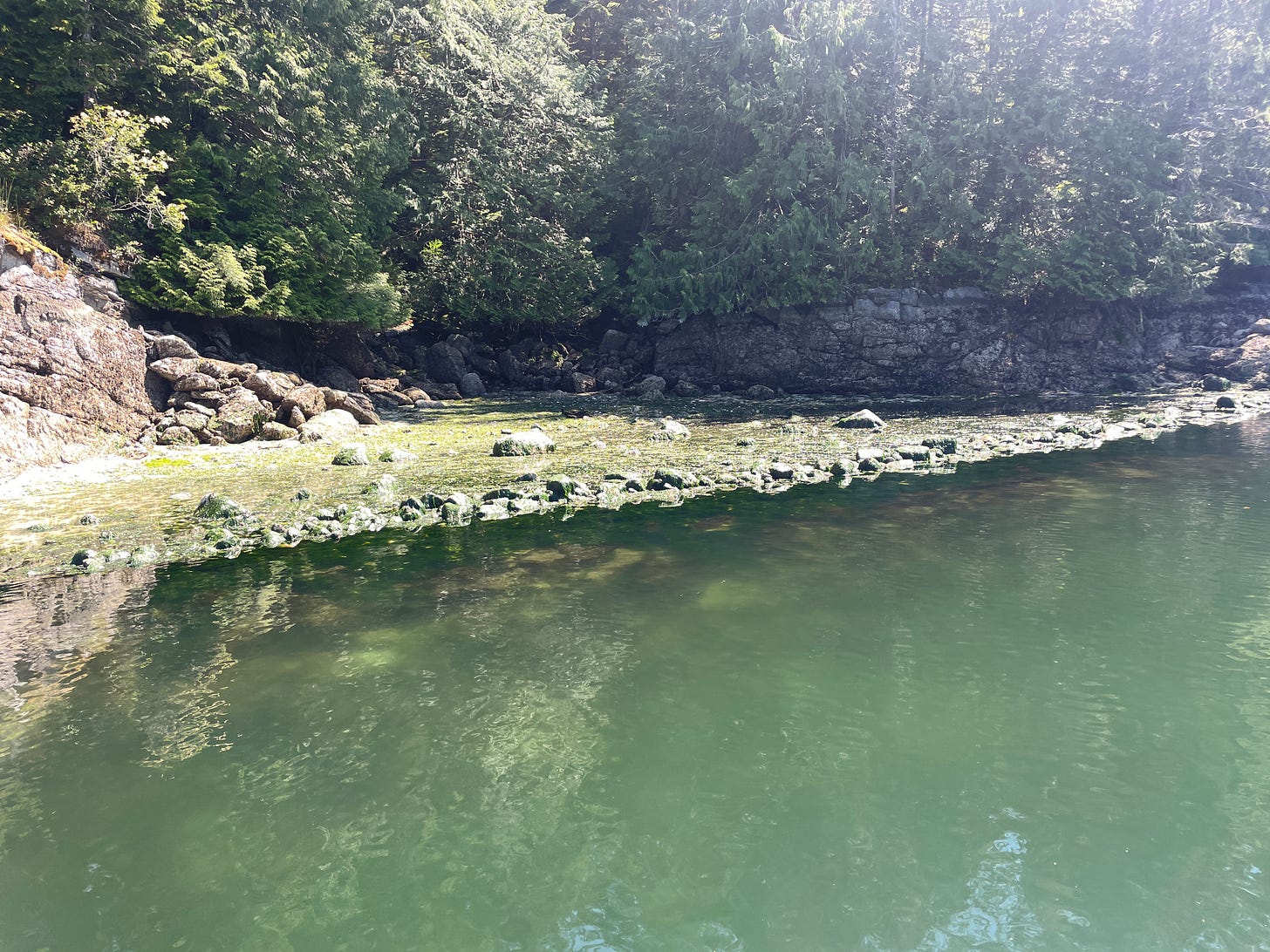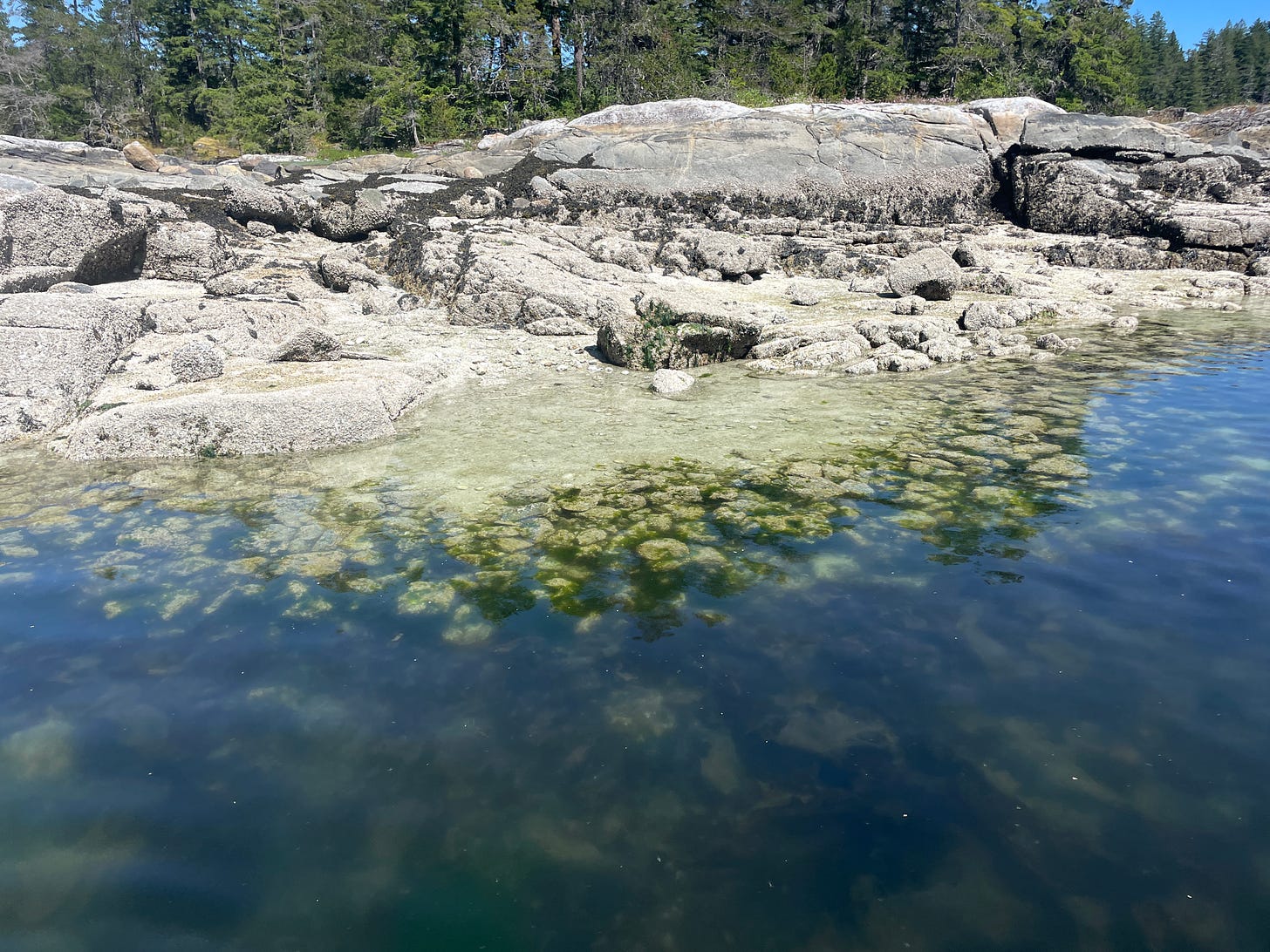In 2019 during a paddle board touring clinic I hosted with Race to Alaska paddler Karl Kruger on Orcas Island, Karl sparked my interest in finding evidence of indigenous Salish culture along Puget Sound.
With 150 plus years of logging and development, I didn't think that was possible to see any evidence of indigenous cultures along the shores of the Salish Sea. Karl pointed out a few visible signs just down the street from his marina in Deer Harbor, plus evidence of earthen camas ovens on nearby Jones Island.
He also introduced marker or trail trees, which are trees shaped by native people to show territory, direction or point to a forage or fishing spot. Once I saw what a marker tree looked like, I realized I've seen them around the Sound.
Hooked on finding marker trees, my research led me to other visible signs of indigenous culture including the use of clam beds representing ancient aquaculture along shorelines.
Clam beds were designed to create a clam foraging spot along shorelines not otherwise known for clamming. Clam gardens are called loxiwe by the Kwiakah First Nation
The beds design included building a rock wall or line or rocks which would collect sand inside thus creating the bed.
Traveling this week by 44’ sailboat with friends in the territory of the Kwiakah First Nation and Discovery Islands of British Columbia just north of the Salish Sea, I kept my eyes peeled for clam beds.
I spotted one or two in the Thurlow Islands and Thurston Bay in Sonora Island but came across many sites along the shorelines in the Octopus Islands of northeast Quadra Island.
Quadra Island
Where we’re currently moored in the Octopus Islands, nearly every beach, cove, inlet and even mini beach has evidence of a clam garden. At one point we had difficulty finding a swimming hole as all shore access was a clam garden.
The Ligʷiłdaxʷ people of Kwiakah First Nation created clam gardens since time immemorial. Archaeologists have traced some sites back 3500 years.
Clam Garden Access & Respect
From the Museum of Campbell River:
Respectful Engagement with Loxiwe
Loxiwe are not merely archaeological sites; they are living cultural landscapes that reflect the deep connection Indigenous communities have with the land and sea. These rock-walled terraces, constructed to enhance clam habitats, have been integral to coastal food systems for millennia. Many loxiwe were situated near permanent or seasonal village sites, serving as vital resources for sustenance and cultural practices.
When visiting these sites, it is crucial to approach them with respect and mindfulness. Engage with loxiwe from a distance, using binoculars or cameras to observe their features without disturbing the environment. Avoid touching or removing any materials, as even small disturbances can impact the delicate balance of these ecosystems. Remember, these sites are not just remnants of the past; they are active expressions of cultural heritage and environmental stewardship.
By honoring the integrity of loxiwe, we contribute to the preservation of Indigenous knowledge and support ongoing efforts to restore and maintain these vital cultural landscapes. Read More
Here's a few examples and links to check out..
Hakai - The Great Walls of Quadra
NW Coast Archaeology - Clam Gardens
Modern or recreated clam gardens:
Paddle to these Places
I offer stand up paddle and touring surf ski coaching in the Seattle area and beyond. Give me a holler to schedule a 1-1 or 2 person lesson to learn how to paddle and/or learn advanced skills to travel to unique places such as above.
Check out My book Paddling the Salish Sea
My book Paddling the Salish Sea 80 Trips includes trips for all levels from South Puget Sound, the San Juans and Strait of Juan de Fuca to south Vancouver Island and Vancouver. Become a paid member to get a discount of complimentary book
.













